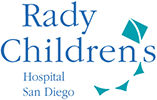Search results
-
A to Z: Cleft Palate With Cleft Lip, Unilateral for Parents
A cleft palate with a unilateral cleft lip is a common birth defect in which a baby's lip and palate (roof of mouth) don't form properly. As a result there is a split or opening (cleft) on one side of the lip that can extend all the way from the nose to the back of the palate.
-
A to Z: Cleft Lip, Bilateral for Parents
Learn about bilateral cleft lip, a common birth defect in which a baby's lip doesn't form properly, resulting in splits (clefts) on both sides of the lip.
-
Cerebral Palsy for Teens
Cerebral palsy is one of the most common developmental disabilities in the United States. It affects a person's ability to move and coordinate body movements.
-
A to Z: Arrhythmia for Parents
An arrhythmia is an abnormal heart rhythm usually caused by an electrical "short circuit" in the heart.
-
A to Z: Clubfoot for Parents
Clubfoot is a birth defect that causes one or both of a baby's feet to turn inward and downward, giving the foot or feet a club-like appearance.
-
Intraventricular Hemorrhage in Newborns for Parents
An intraventricular hemorrhage (IVH) is bleeding in and around the brain’s ventricles. Most babies with a mild IVH do well.
-
A to Z: Congenital Anomaly for Parents
Sometimes babies are born with anomalies - one or more parts of the body that are different from normal in size, shape, or functioning. Learn more here.
-
The IUD for Teens
Before you consider having sex, you need to know how to protect yourself. Learn more about the IUD and to find out how well it works for teens.
-
A to Z: Lymphangioma Circumscriptum for Parents
Learn about congenital defects and conditions that affect the lymphatic system.
-
A to Z: Ureterocele for Parents
Ureteroceles are caused by a birth defect in which the opening in the ureter is too small for urine to pass freely into the bladder.

 Note: All information is for educational purposes only. For specific medical advice,
diagnoses, and treatment, consult your doctor.
Note: All information is for educational purposes only. For specific medical advice,
diagnoses, and treatment, consult your doctor.